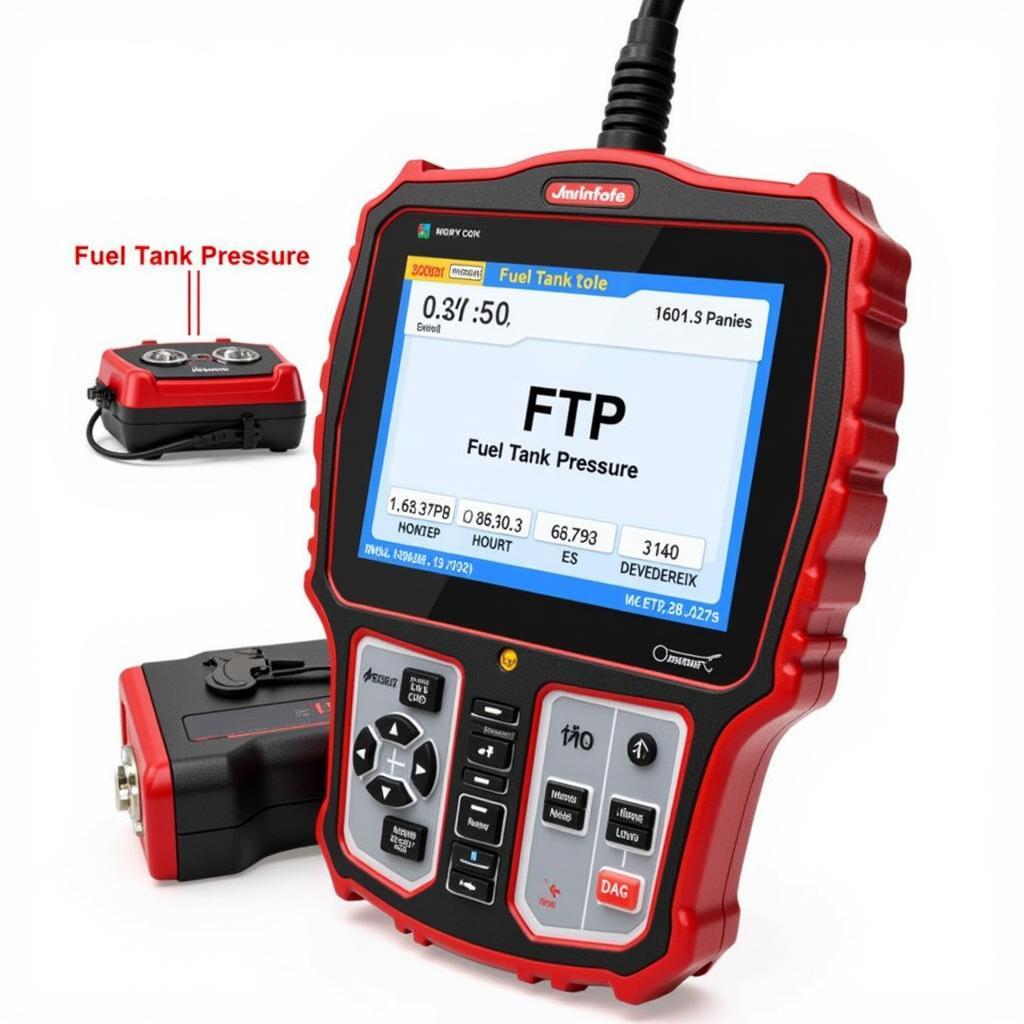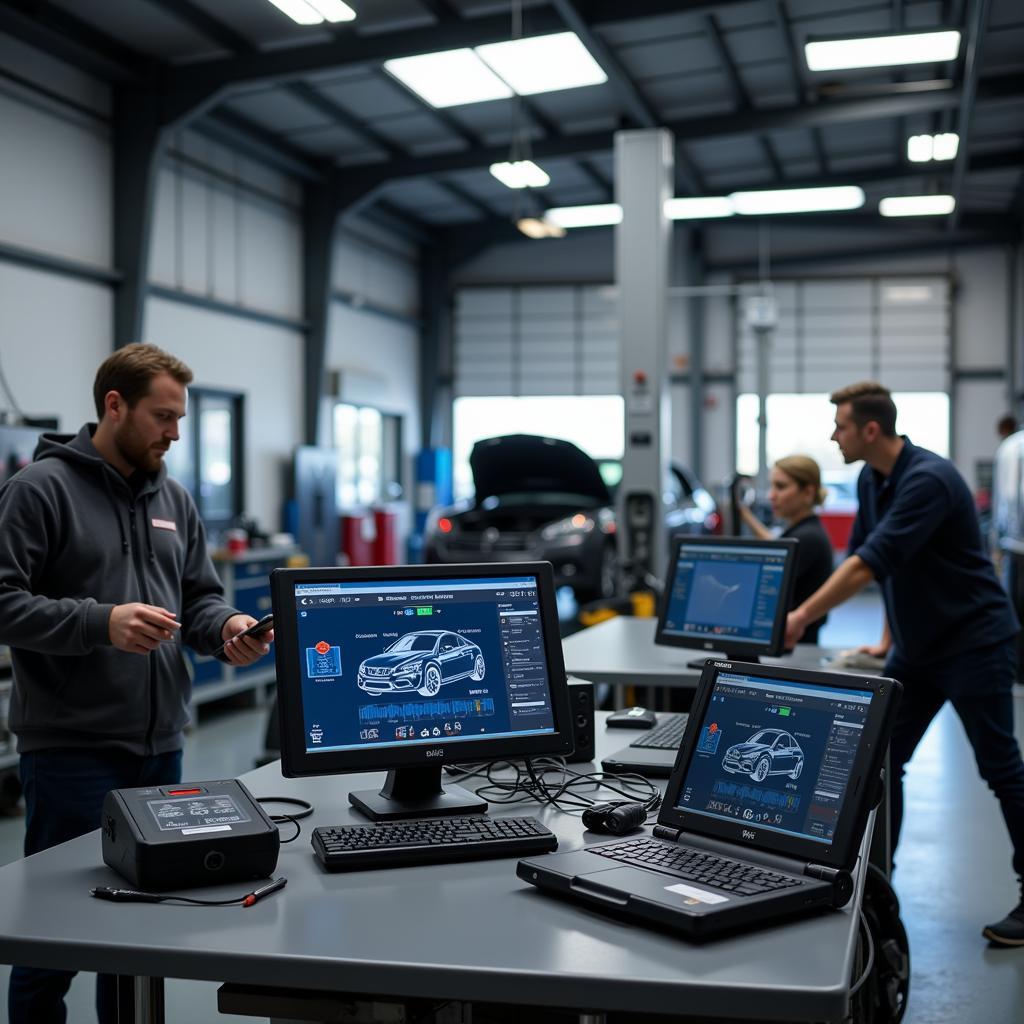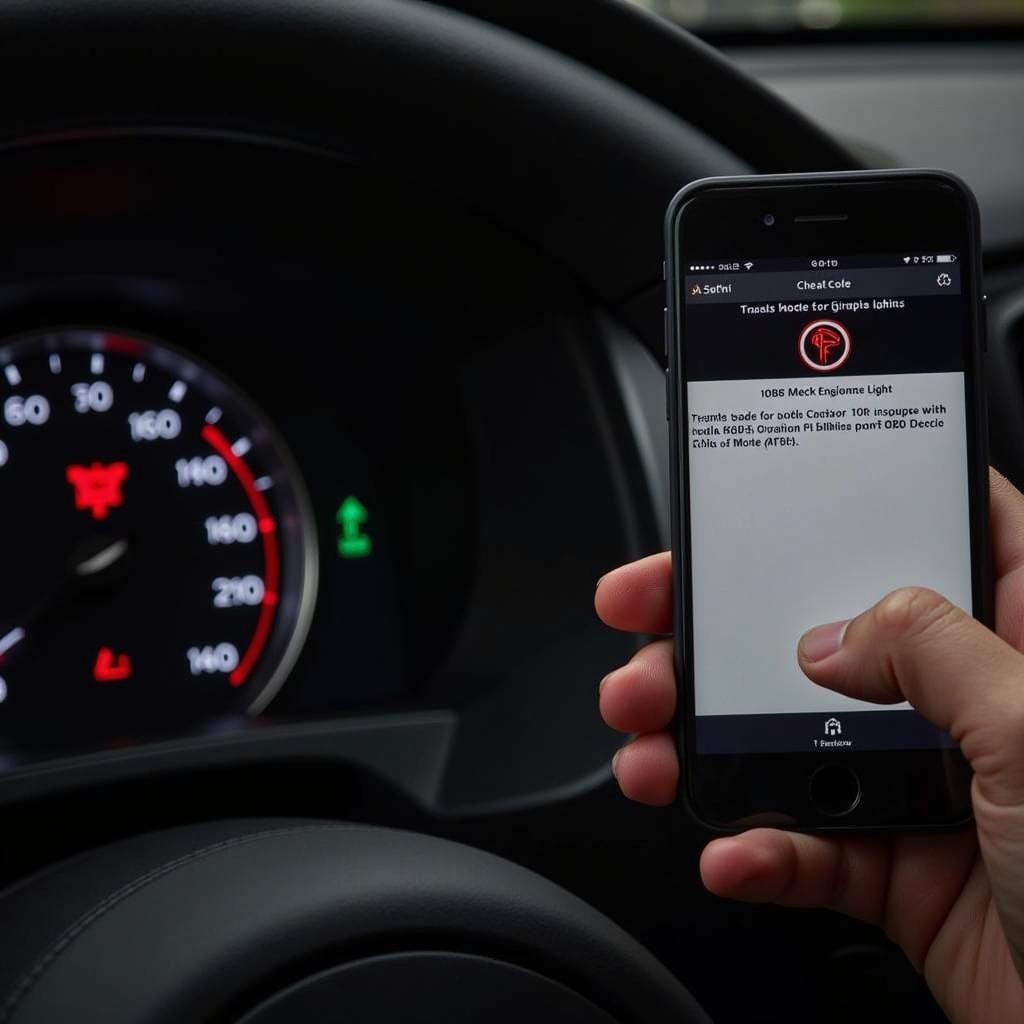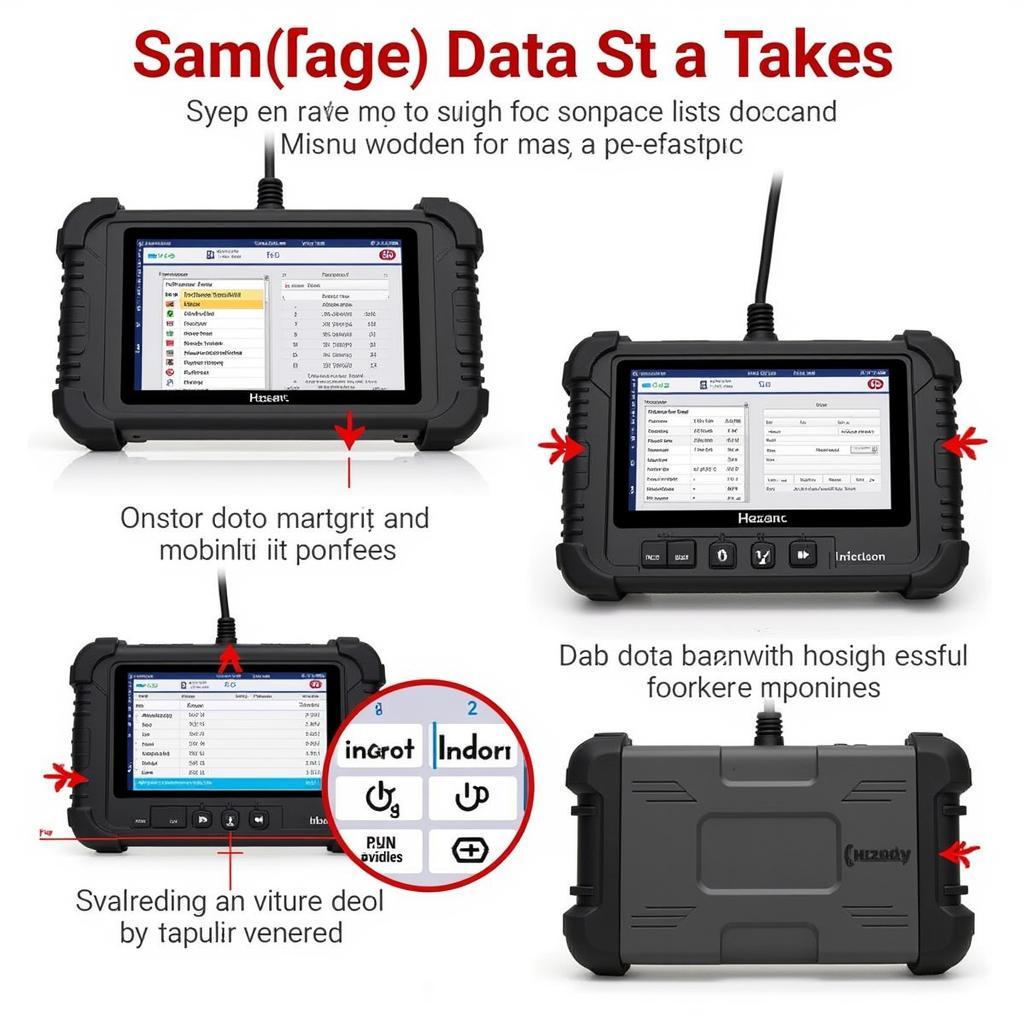Understanding what FTP means on a scan tool is crucial for anyone working with modern vehicles, whether you’re a professional mechanic, a DIY enthusiast, or simply a curious car owner. This seemingly small acronym unlocks a world of information about your car’s performance and potential issues. So, let’s dive into the meaning of FTP and how it can help you diagnose and fix car problems.
Decoding FTP: Fuel Tank Pressure
FTP on a scan tool stands for Fuel Tank Pressure. This sensor plays a vital role in maintaining the optimal pressure within your vehicle’s fuel system. A properly functioning fuel system is essential for engine performance, fuel efficiency, and emissions control. The FTP sensor monitors the pressure inside the fuel tank and sends this information to the vehicle’s Engine Control Module (ECM). The ECM uses this data to adjust the fuel delivery and ensure efficient combustion.
Why is Monitoring Fuel Tank Pressure Important?
Monitoring fuel tank pressure is essential for several reasons. Firstly, it helps prevent the release of harmful fuel vapors into the atmosphere. A leaky fuel system can lead to significant environmental damage, and the FTP sensor aids in detecting such leaks. Secondly, maintaining the correct fuel tank pressure ensures optimal engine performance. Fluctuations in pressure can lead to issues like rough idling, poor acceleration, and decreased fuel efficiency.
How the FTP Sensor Works
The FTP sensor is typically located on or near the fuel tank. It’s a small electronic device that measures the pressure difference between the inside of the fuel tank and the outside atmosphere. This pressure differential is then converted into an electrical signal that is sent to the ECM. The ECM uses this signal to regulate the fuel pump and maintain the correct fuel pressure.
Common FTP-Related Issues and Troubleshooting
Several issues can arise with the FTP sensor or the fuel system itself, leading to incorrect pressure readings. These issues include:
- Faulty FTP Sensor: The sensor itself can malfunction due to age, wear, or exposure to harsh conditions.
- Leaking Fuel Tank: A leak in the fuel tank can cause pressure loss and trigger a fault code.
- Clogged Fuel Lines: Blockages in the fuel lines can restrict fuel flow and affect pressure readings.
- Damaged EVAP System: The Evaporative Emission Control (EVAP) system is responsible for capturing fuel vapors. Problems with this system, such as a faulty purge valve, can impact fuel tank pressure.
Troubleshooting FTP Issues with a Scan Tool
A scan tool is your best friend when diagnosing FTP-related problems. It allows you to read the FTP sensor data and identify potential issues. Here’s a step-by-step guide:
- Connect your scan tool to the vehicle’s diagnostic port.
- Turn the ignition on, but don’t start the engine.
- Select the “Data Stream” or “Live Data” option on your scan tool.
- Locate the “FTP” parameter and observe the reading.
- Compare the reading to the manufacturer’s specifications. A significantly high or low reading indicates a problem.
 Scan Tool Displaying FTP Reading
Scan Tool Displaying FTP Reading
“A scan tool is an invaluable tool for diagnosing FTP issues. It provides real-time data and allows you to pinpoint the problem quickly and efficiently.” – John Miller, Automotive Diagnostics Specialist
What Does an Abnormal FTP Reading Mean?
An abnormal FTP reading can indicate several issues. A low reading might suggest a leak in the fuel system, while a high reading could point towards a blockage in the EVAP system. If you encounter an abnormal FTP reading, it’s crucial to investigate the issue further. Ignoring these problems can lead to more significant issues down the road.
Preventing FTP Problems
While some FTP issues are unavoidable, regular maintenance can help prevent many problems. This includes:
- Regular Fuel System Inspections: Check for any signs of leaks or damage in the fuel lines and tank.
- Replacing the Fuel Filter: A clogged fuel filter can restrict fuel flow and affect pressure. Replace the filter according to the manufacturer’s recommendations.
- EVAP System Maintenance: Ensure the EVAP system is functioning correctly to prevent pressure buildup.
 Mechanic Inspecting Fuel Lines
Mechanic Inspecting Fuel Lines
“Preventive maintenance is key to avoiding FTP-related problems. Regular checks and timely replacements can save you from costly repairs in the long run.” – Maria Sanchez, Certified Automotive Technician
Conclusion
Understanding what FTP means on a scan tool empowers you to take control of your vehicle’s health. By monitoring fuel tank pressure and addressing any issues promptly, you can ensure optimal engine performance, fuel efficiency, and minimize environmental impact. If you have further questions or need assistance with your vehicle’s FTP system, feel free to connect with the experts at ScanToolUS. You can reach us at +1 (641) 206-8880 or visit our office at 1615 S Laramie Ave, Cicero, IL 60804, USA.
 Modern Car Diagnostic Equipment
Modern Car Diagnostic Equipment
FAQ
- What is the normal FTP range for my vehicle? The normal FTP range varies depending on the make and model of your vehicle. Consult your vehicle’s owner’s manual or a reliable online resource for specific information.
- Can I drive my car with a faulty FTP sensor? While you might be able to drive with a faulty FTP sensor, it’s not recommended. Ignoring the issue can lead to more significant problems and potentially damage other components.
- How much does it cost to replace an FTP sensor? The cost of replacing an FTP sensor varies depending on the vehicle and the labor rates in your area. It typically ranges from $50 to $200.
- How can I check my EVAP system? You can check your EVAP system using a scan tool or by performing a pressure test. A qualified mechanic can perform a thorough inspection and diagnose any issues.
- What are the signs of a leaking fuel tank? Signs of a leaking fuel tank include the smell of gasoline, visible fuel leaks, and a decrease in fuel mileage.
- Can a clogged fuel filter affect FTP readings? Yes, a clogged fuel filter can restrict fuel flow and affect fuel tank pressure readings.
- Where can I find more information about using a scan tool? You can find various resources online, including tutorials, forums, and manufacturer websites, that provide detailed information about using a scan tool.


